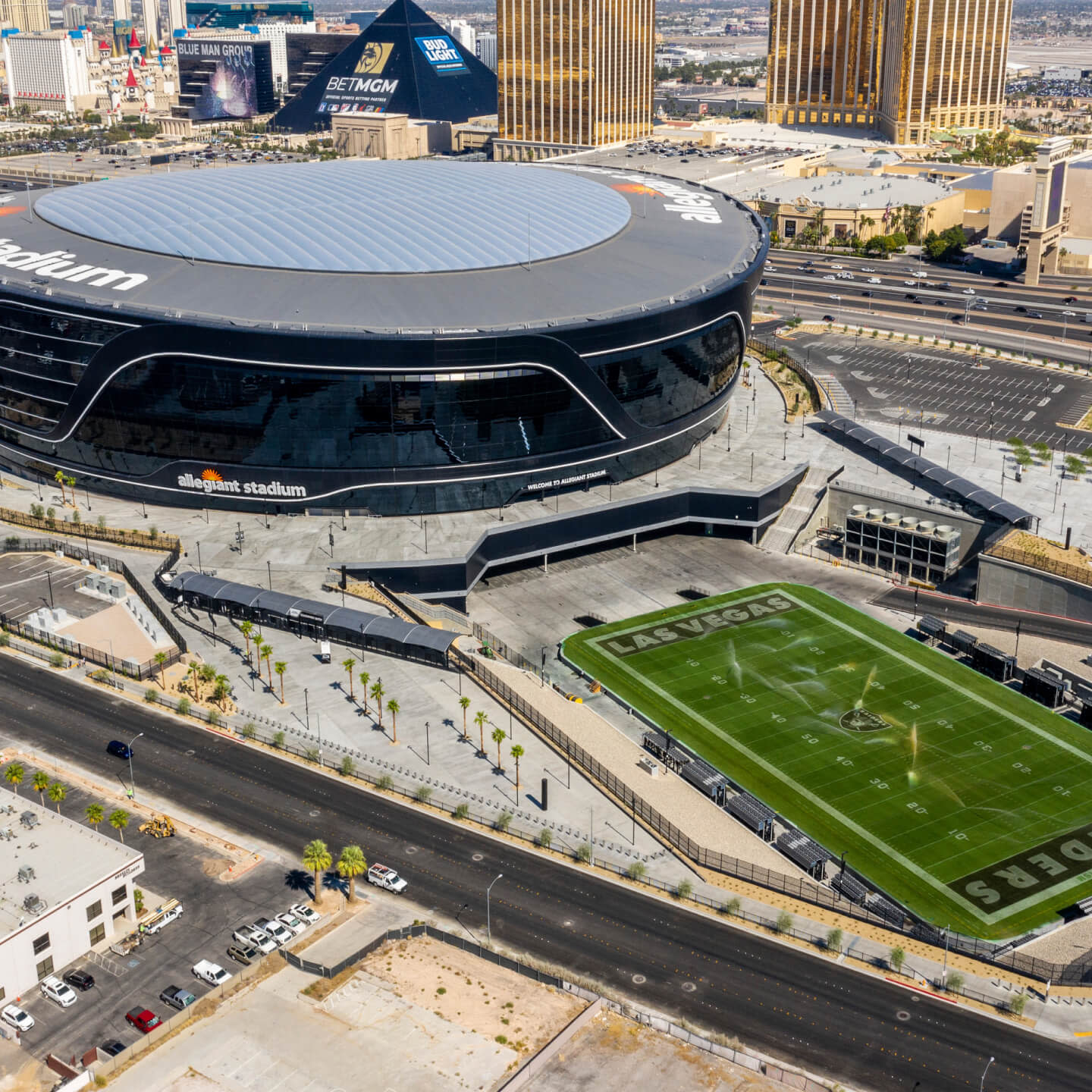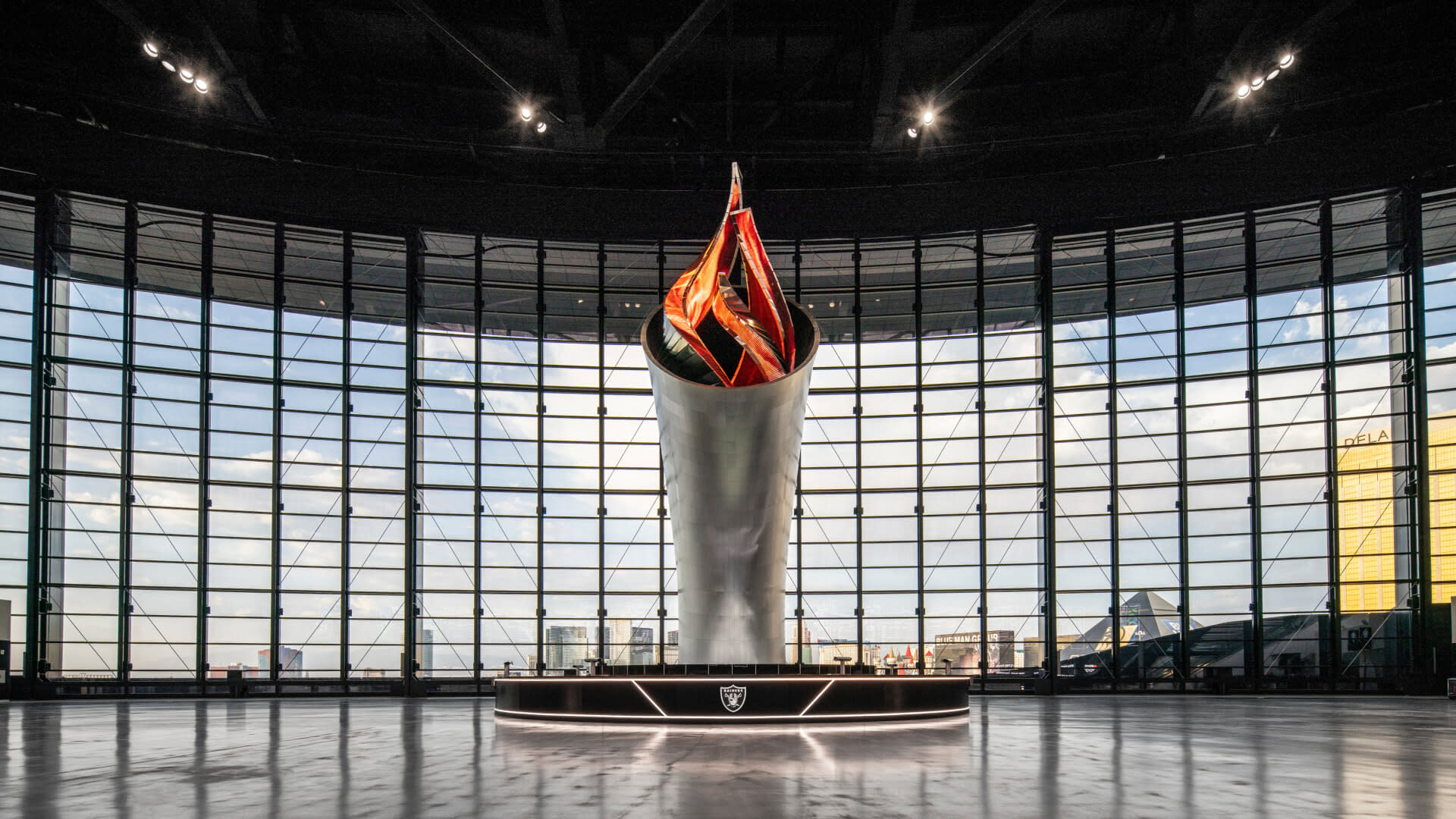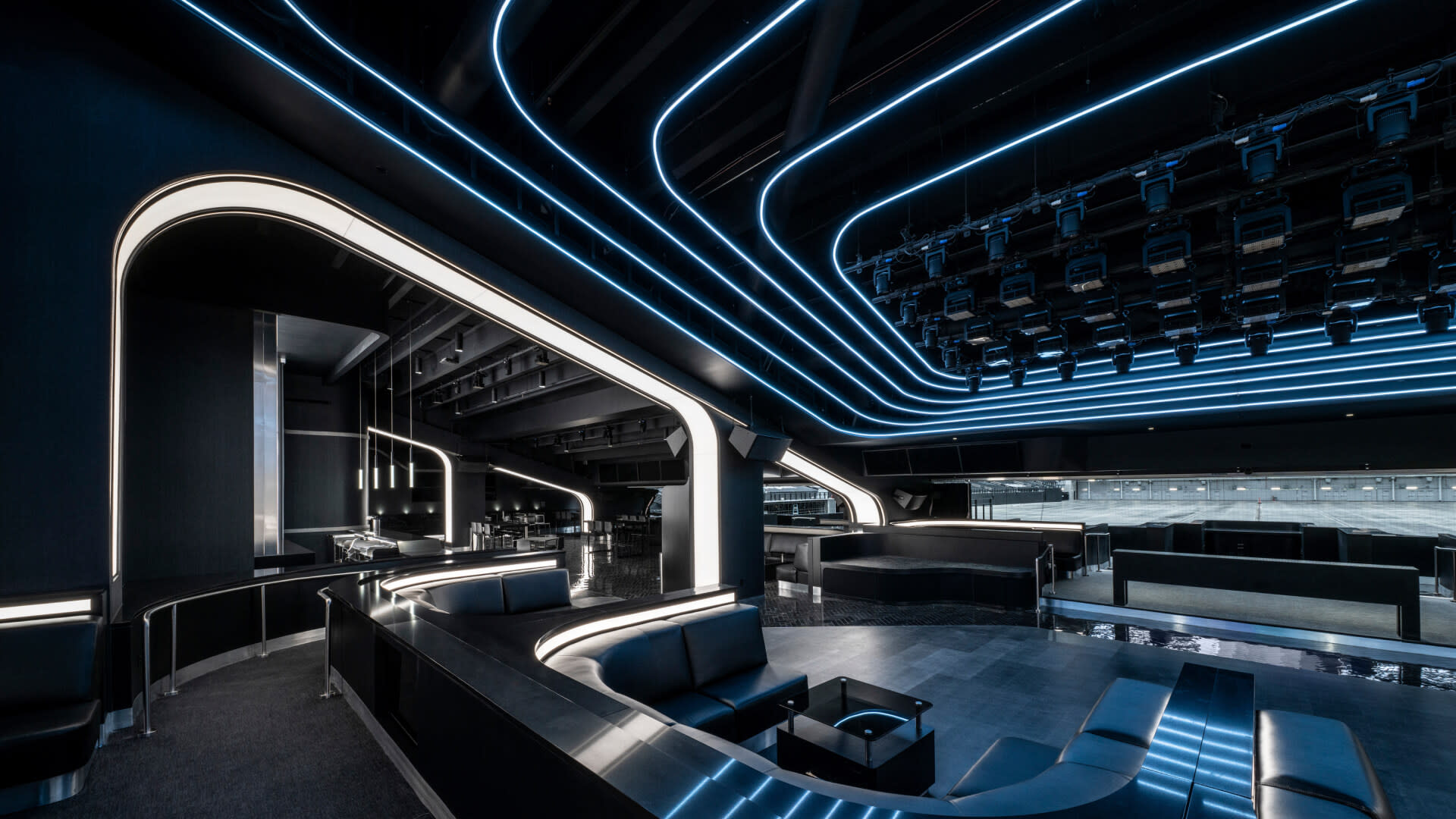Customer Story
Streamlining processes for a cutting-edge stadium project
Mortenson used Procore to unify teams, optimize data, and improve collaboration on the Raiders' Allegiant Stadium build

The Challenge
The largest, most complex football stadium design-build, the 65,000 seat Las Vegas Raiders’ Allegiant Stadium had to be completed on an unforgivingly tight schedule. The design-build process required the field to immediately accommodate emerging design changes on the fly—a model of collaboration and communication that allowed no missteps.

The Solution
Procore’s construction management platform consolidated, organized, and clarified the Allegiant megaproject’s storm of details. The platform’s transparent, single-source of truth provided complete collaborative fluidity and real-time communications so that all teams contributed concurrently to meet their deliverables on schedule.

The Results
- 40-month project timeline achieved, from design to blasting to owner occupancy
- 400 project workers collaborated through the 3D model
- 60+ prime contractors, each with two to three sub tiers collaborating through Procore
“Procore is the platform we use to create a single source of truth. To point all of those thousands of team members to the latest and greatest information.”
Joel Jacobson
Senior Virtual Design Construction Manager
Mortenson
Raiders’ New Allegiance to a New Hometown
When a storied football franchise moves from one great city to another, the ensuing event features that peculiar mix of heartbreak and champagne unique to professional sports. Then the dust settles, and you have to build a stadium. At least that’s how it played out when the Raiders left Oakland and moved to Las Vegas. Allegiant Stadium—a design-construction marvel and the Las Vegas Raiders’ new home—would seat 65,000 fans (or the population of Cheyenne, Wyoming) in a sleek, obsidian-black, aerodynamic shell that crossed an intergalactic Mothership with a black Lamborghini.
A futurist colossus like the Allegiant Stadium is not built in a day. Having said that—no time was wasted. "The total duration from design through owner occupancy was 40 months," says Joel Jacobson, Mortenson’s Senior VDC Manager. Step one? Tearing an enormous hole in the Vegas desert. Jacobson was there. "About three feet below grade the ground was essentially like concrete, stuff they call caliche. Each afternoon at 3:30, we would feel a mini-earthquake in our site trailers. We knew they were blasting out for mass excavation."
895,000 cubic yards of dirt removal later, Allegiant Stadium would be built using construction management technology that a mere decade ago would’ve been controversial. The stadium’s design-build model—the largest in the football league’s history and only their second stadium using this process—would require an extraordinarily nimble and responsive field team to make it all happen on deadline and within budget. "Design was being developed so fluidly," Jacobson says, "Procore was the place where we all gathered to consume milestone data. As VDC team members, it was our obligation to communicate and consume information through Procore. Knowing this build wouldn't have been possible without leveraging data, technology, 3D coordination—it gives me a lot of pride."
“It became quickly apparent that Procore was our one-stop-shop for everything.”
Sara Rouse, Project Manager for Mortenson, arrived at the Allegiant site and hit the ground running. Yes, she had questions. Fortunately, all the answers were waiting for her in one highly organized space—Procore’s platform. "Where are the drawings so I can start diving into this project? Where are the specs? Where are all these change events that I'm supposed to be managing? And the answer always turned out to be Procore, right?" Rouse smiles. "It's a great system to use—easy to catch on to. It's simple enough for everybody on the job to learn how to use quickly and effectively." Mortenson Project Executive Sarah Narjes concurs. "I call Procore the mesh—the foundational element that interweaves the whole team, from trade partners, to craft folks, to superintendents, to the design team. All of those disciplines use Procore to communicate the need, to communicate the small pieces and the big pieces, the work sequence; everything."
Adam Hardy, Market Director of the Sports and Entertainment group at Mortenson, saw in Procore pure collaboration. "The way Procore works is no different than the way we talk about trade flow in the field. One trade contractor is dependent on the person before them to do a certain activity a certain way by a certain date—and that sets them up to be successful. Procore works in much the same way as far as the workflow of information. It provides a very transparent platform for everybody to see all of the project information. That transparency also helps people hold each other accountable." Quantifying the time savings Procore provides a job of this size and complexity can be tough. So Hardy breaks it down to a simple example.
"Just walking from our trailer to the north end of the stadium, for example—that was a 10 minute walk." Hardy pauses and qualifies. "If you could walk to the north end of the stadium without getting distracted by something on the way, without someone stopping to ask for something, it would take 10 minutes. I can't exactly remember, but we were probably 10,000 questions deep with RFIs and things on this project. I mean, 10,000 times 10 minutes…and that's just going one direction! So everyone being able to autonomously get their info from the Procore platform? Extremely valuable."
An Achievement both Personal and Technological
Joel Jacobson is all about the stadium’s envelope-pushing. "Whether it's the rolling field or the largest 3D printed object in the country—the Al Davis memorial torch at nine-stories tall—the stadium is spectacular. One of the most exciting aspects was bringing robotics to the project site, as a partnership with Stanford and their robotics program. We had the wall layouts painted by robots in direct communication via the 3D model." Allegiant Stadium’s relatively short construction timeframe owes much to the seamlessness of the collaboration, as Sara Rouse explains. "Every time we got a new design package out," Rouse says, "there was a lot of digging into it from all members across the team. Is this constructible? Does this work with what we have going on? How much money is it going to cost us to implement these kinds of changes? And so again, Procore was able to help us as a kind of one-stop-shop. Design-build screams collaboration. Procore really complemented that."




